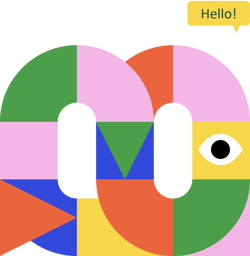A question ?
We are here to help you!

Myndea
Is Myndea easy to use?
Myndea has been designed as a simple and intuitive tool that can be used by anyone. It does not require any technical knowledge.
What role does AI play in the operation of Myndea?
- The duration of interventions
- The technician/intervention pairing according to qualification, availability and proximity
- The success rate of the intervention
- The next interventions for you and your customers
- Your additional sales
Artificial Intelligence
What is connectionist AI?
An artificial neural network (machine learning) is composed of artificial neurons. These neurons are grouped in layers. Each neuron is connected to the neurons in the neighbouring layers. Depending on the stimuli received by the axons of the neurons of the previous layer, the neuron will itself stimulate or not the neurons of the next layer.
The training of the neural network consists in presenting several data (Xi) as input, the result of which is known for each (Yi). Using a regression algorithm, the weights of the neurons are modified in order to minimise the difference between the expected result and the result obtained.
For example, we provide photos with numbers '1', '2' and '3' as input: 1000 photos with '1', 1000 photos with '2' and 1000 photos with '3'. We start with neurons with random weights. We input the 3,000 photos successively, and observe the number of errors in the output predictions, for classes '1', '2' and '3'. We then modify the weights to try to achieve a lower total error. The model is finished being trained when the minimum error is reached for the training dataset. A test dataset (photos not used in training) can then be used to check that the neural network is capable of predicting something other than the photos it has already learned.
There are other algorithms in the same family, such as random forests or boosting gradient.
What all these methods have in common is that they require a large training dataset, and are black-box, i.e. the weights of the neurons do not make it explicitly clear why it chooses this or that output class.
(There are, however, different variants that allow to limit the input data, and to explain part of the black box).
What is symbolic AI?
Rational human reasoning is formulated in the form of symbols: 'if', 'and', 'or', 'implies'... For at least two and a half thousand years scholars have sought to refine these symbols so that they can represent the most complex reasoning. The most famous ancient scholar in this respect is Plato. But since then, every generation has sought to improve this language, even in the Middle Ages. The current form used is mainly the work of Bertrand Russell in the early 20th century.
Symbolic AI aims to use this formalism of logic rules. For example, to recognise numbers, a number of rules will be defined: a '1' has a large vertical bar and a small slash at the top left, etc.
By its nature, symbolic AI does not need a large amount of training data, and there is no black box, so there is full explicability of the results. On the other hand, input rules must be defined, which requires a human analysis of the problem.
What is the difference between connectionist AI and symbolic AI?
Connectionism and symbolism are the two most popular forms of AI today.
They aim to replicate the functioning of a human brain, but at different levels of abstraction.
Connectionism reconstructs the local functioning of neurons, while symbolism reproduces human reasoning methods.
